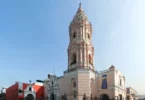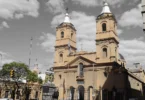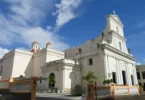Introduction

The Cathedral-Basilica of St.John the Baptist in St. John’s, Newfoundland and Labrador is the metropolitan cathedral of the Roman Catholic Archdiocese of St. John’s, Newfoundland and the mother church and symbol of Roman Catholicism in Newfoundland. The structure is in the St. John’s Ecclesiastical District, a National Historic District of Canada. The Basilica-Cathedral was the largest building project to its date in Newfoundland history. Construction lasted from the excavation of the ground in May 1839, through the laying of the cornerstone in May 1841, until the completion and consecration on September 9, 1855. At this time, it was the largest church building in North America and remains the second largest church in Canada after Saint Joseph’s Oratory in Montreal and the largest cathedral church in Canada. The Basilica-Cathedral is one of the few buildings in St. John’s to withstand the 1892 Great Fire. Pope Pius XII elevated the cathedral to the status of minor basilica during the celebration of its centenary in 1955. On October 17, 2007, Bishop Martin Currie of the Diocese of Grand Falls was appointed archbishop of St. John’s. On November 30, 2007, he took over, and on January 29, 2019, he retired. 2] On December 12, 2018, Bishop Peter Hundt of the Roman Catholic Diocese of Corner Brook and Labrador was appointed archbishop of St. John’s. He took canonical possession of the diocese on 29 January 2019.
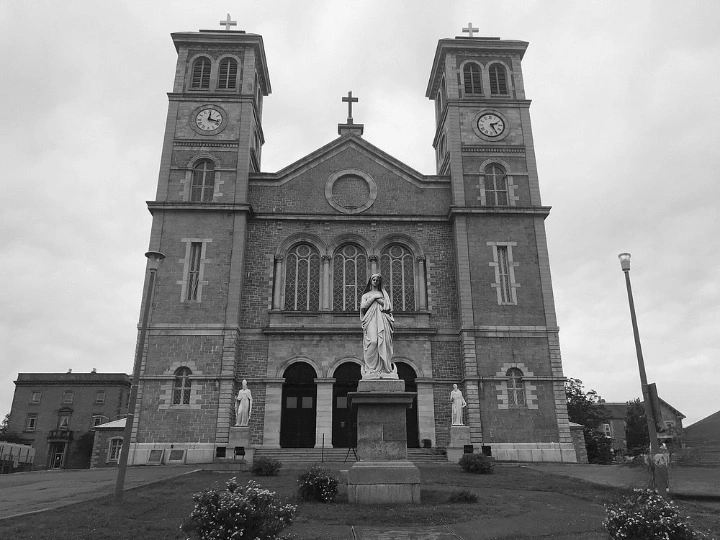
A Church on the Ridge
Back in the mid-1800s, St. John’s was still growing, and right on the highest ridge overlooking the city, they started building what would become one of the most important churches in Newfoundland The Basilica-Cathedral of St. John the Baptist. Even though it looks like it’s just planted there for the view, there’s more to its position than that. Unlike most churches, it’s not lined up east to west or aimed at the harbour entrance. Instead, the church was built to face the rising sun on the winter solstice and the setting sun on the summer solstice just like the famous Chartres Cathedral in France. Work started in 1839 and didn’t wrap up until 1855, so it was a long project, but one that definitely left a mark.
Design and Style
Built in the shape of a Latin cross, the Basilica follows the Lombard Romanesque style, similar to an old Roman basilica. Ole Joergen Schmidt, a Hamburg-based Danish government architect, created it for Bishop Michael Anthony Fleming. Fleming also sought advice from Irish architects, including John Philpot Jones from Tipperary and James Murphy of Dublin. Michael McGrath, a contractor from Waterford, was in charge of construction at first. James Purcell, a Cork stonemason and sculptor, eventually took over. Purcell is also known for designing Christchurch, a small wooden church at Quidi Vidi, just outside St. John’s.
Building a Landmark
Both Bishop Fleming and his successor, Bishop John Thomas Mullock, closely supervised the work. The choice of materials is what sets the Basilica apart, especially for the 1800s in North America. It was built with limestone and granite imported from Galway and Dublin, along with 400,000 bricks brought in from Hamburg. Local sandstone and Newfoundland bluestone from Kelly’s Island and St. John’s were also used, giving the building its distinctive grey tone.
A Symbol of Irish Pride
The construction of the Basilica happened during a time of huge Catholic revival, around the era of Daniel O’Connell and Catholic emancipation in both Ireland and Newfoundland. When it was finished, it was the largest Irish cathedral outside of Ireland itself. It was widely acknowledged at the time that Ireland had a significant impact on the building’s design, construction, and purpose.
Recognition and Status
In 1955, during its 100-year anniversary, Pope Pius XII officially raised the church to the rank of minor Basilica. It was later designated a National Historic Site of Canada in 1983 for its role as a spiritual and cultural center for Roman Catholics in Newfoundland and its early example of Romanesque Revival architecture. Additionally, it is recognized by the Heritage Foundation of Newfoundland and Labrador as a Registered Heritage Structure. Bishop Fleming, the man who created it, was named a Person of National Historic Significance in 2005.
Challenges and Preservation
In 2021, the Basilica became part of a painful chapter in Newfoundland’s history. The Basilica was one of several properties that the local diocese said were being evaluated for possible sale. The aim was to raise funds to compensate survivors of abuse at the Mount Cashel Orphanage. However, in July 2022, there was a major development. The Basilica Heritage Foundation a non-profit group committed to preserving these historic sites announced it would purchase the Basilica and surrounding properties. Because of this, the Basilica was able to remain open and continue to be the primary Catholic Church for St. John’s.
Architecture of Cathedral Basilica of St. John the Baptist, St. John’s, Canada
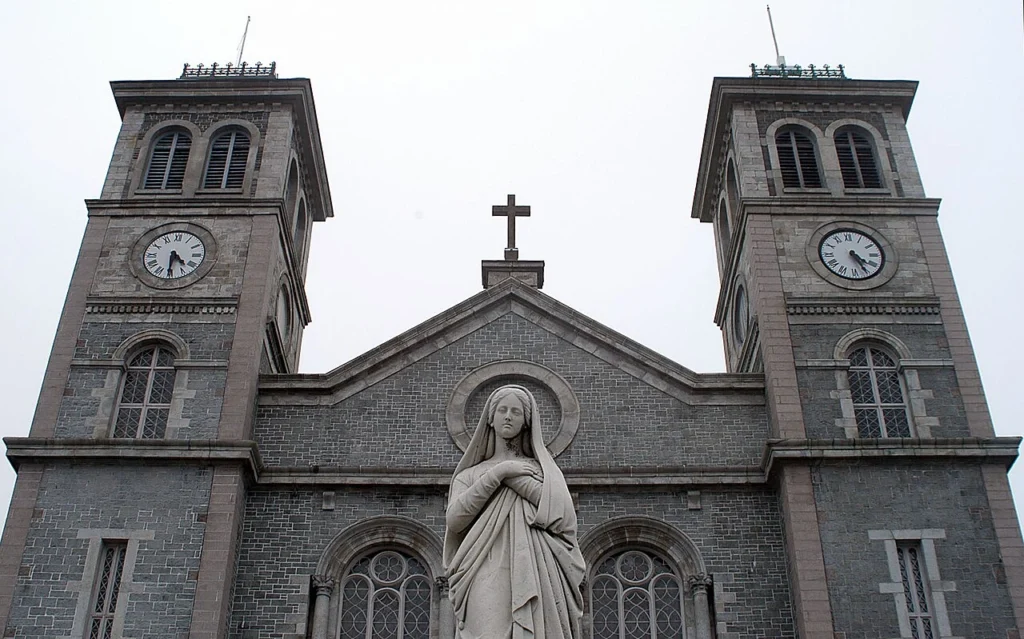
Architect : John Philpot Jones
Architectural style: Romanesque Revival architecture
The Basilica-Cathedral of St. John the Baptist was built using grey limestone and white granite, sourced from Galway and Dublin, Ireland, as well as grey sandstone from St. John’s and Kelly’s Island in Conception Bay, Newfoundland. It’s a stunning example of Lombard Romanesque architecture, a style influenced by the old churches of northern Italy. The exterior of the building measures about 260 feet long and 220 feet wide, with its two towers rising 150 feet above street level. When it was completed in 1855, the Basilica was actually the largest church building in all of North America. It can hold around 2,500 people, though during Pope John Paul II’s visit in 1984, over 3,600 educators packed into the space to greet him.
The Bells of the Towers
The East Tower houses the largest bell in the Basilica a two-ton giant known as the St. John Bell. It was bought by Bishop Mullock in 1850 and was cast by John Murphy in Dublin. At the time, it was the biggest bell ever made in Ireland and even won a gold medal at the Dublin Exhibition of Irish Manufacturers. The West Tower contains eight bells in total. The three biggest were also cast by Murphy in the 1850s, while the other five came later in 1906, created by Matthew O’Byrne of the Fountain Head Bell Foundry, also in Dublin.
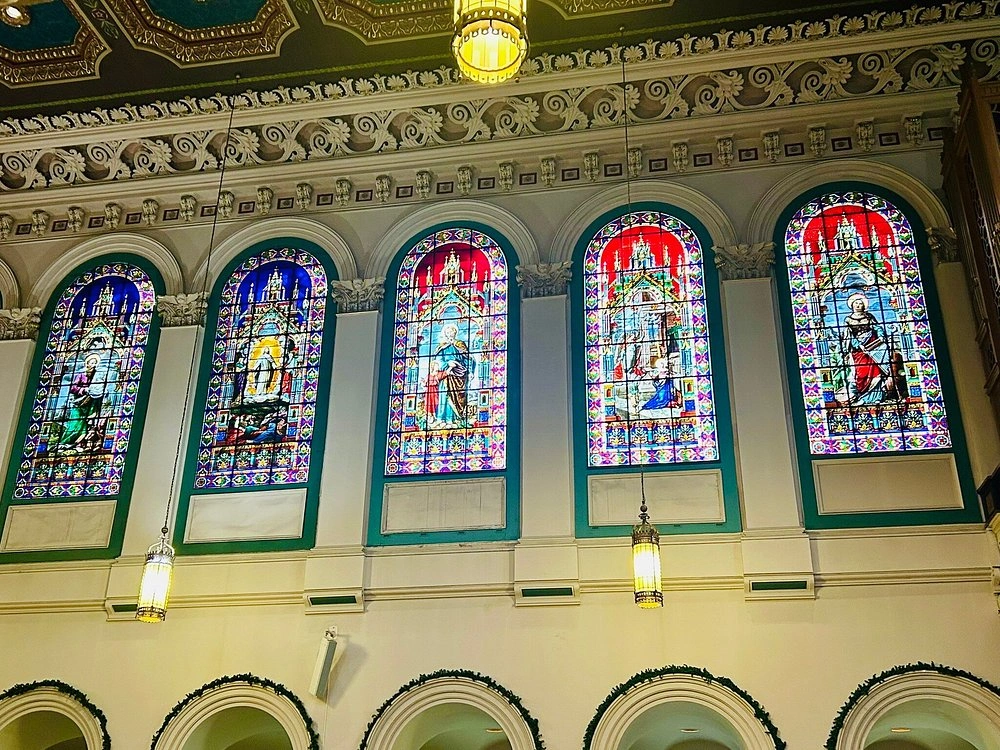
Stained Glass Windows
The Basilica has twenty-eight stained glass windows high up along the walls. These windows came from England and France and were gifts from different religious groups, like the Society of the Holy Rosary. They were installed over several decades, between 1859 and 1905. The ambulatory, which is the path that goes around the main altar, also has 35 more stained glass windows. These were added later, around 1954-55, and were made by Gerard Earley and Company from Dublin. This collection is actually the largest grouping of mid-20th-century Irish Arts and Crafts stained glass windows in one place anywhere in the western hemisphere.
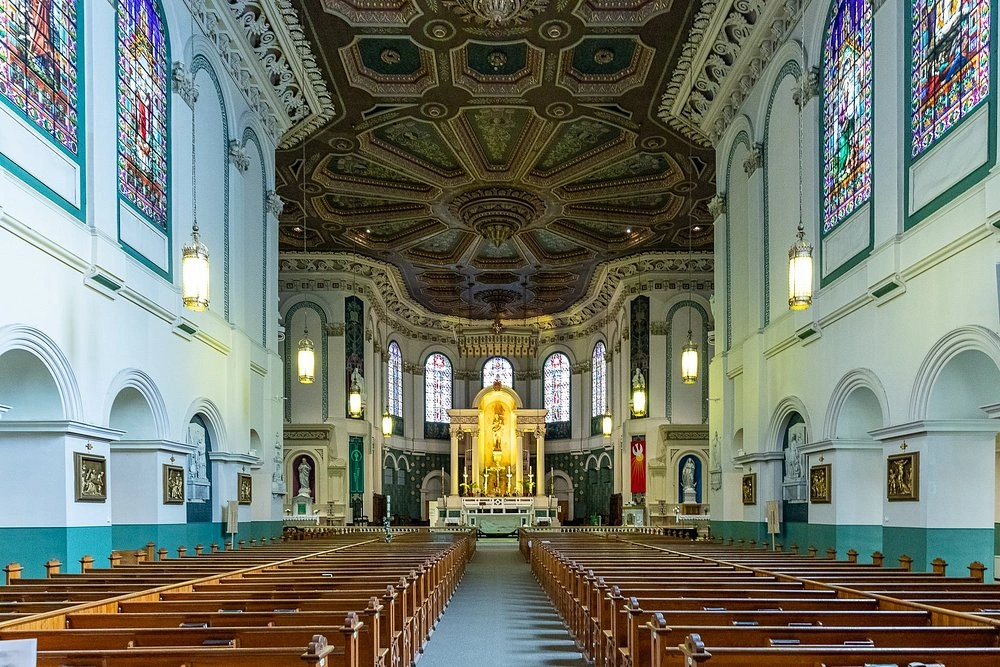
Interior
The Altar of Sacrifice, which stands at the front of the Sanctuary, enshrines one of the most revered and important pieces of statuary in the Basilica, The Dead Christ, sculpted in Carrara marble by renowned Irish neoclassical sculptor John Hogan in 1854. Having seen earlier versions of this work by Hogan in Dublin and Cork, Bishop Fleming left funds and directions in his last will and testament that a “Dead Christ by Hogan” be purchased for the Cathedral. Prior to coming to Newfoundland, Fleming’s successor, Bishop Mullock, also had a version of the Hogan Dead Christ installed in his own chapel, the South Chapel {St. Finbar’s} in Cork. Mullock commissioned this rendering of the work in 1854 and placed it beneath the table of the High Altar on 19 March 1855. The statue is Hogan’s greatest masterpiece and is the final of three similar statues created by Hogan in the early 19th century and the only one located outside Ireland. The Basilica also features works by Ireland’s most eminent expatriate sculptor, John Edward Carew, whose famous bas-relief The Death of Nelson is located on the plinth at Nelson’s Column, Trafalgar Square, London. The Sacred Heart Altar and the Altar of the Immaculate Conception, located on the west and east sides of the High Altar in the Sanctuary, respectively, are constructed from the same Egyptian travertine that was used by Pope Gregory XVI, to decorate the high altar of the Basilica of St. Paul Outside the Walls in Rome. A small quantity of this stone remained in Rome and, of this, two portions were offered by the Pope to Bishop Mullock, who subsequently brought the stone to St. John’s in 1856 to complete the interior of the Basilica.
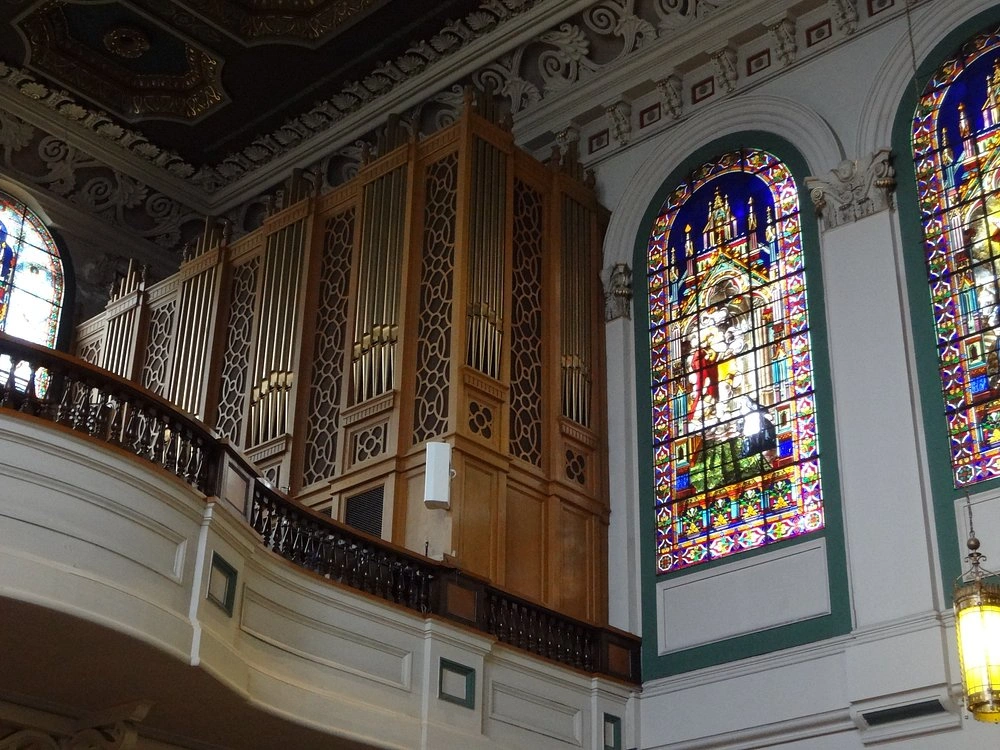
The Great Organ
In 1955, the parish installed a great pipe organ from the Casavant Frères firm of St-Hyacinthe, Québec and dedicated it in memory of the parishioners who died in World War I and World War II. The 66 stop organ with 4,050 pipes is the largest instrument in Newfoundland, and is one of the largest pipe organs east of Montreal.
Basilica Museum
The Basilica Museum is open seasonally, and is located in the Episcopal Library attached to the Archbishop’s Palace. Exhibits include religious art, historic and religious artifacts of the Basilica, pictures of bishops and archbishops of St. John’s, and furniture and decorations of several period rooms in the Palace. Both the Episcopal Library and Archbishop’s Palace are in their own rights National Historic Sites of Canada.
Feast Day
Feast Day : 24 June
The feast day of the Cathedral Basilica of St. John the Baptist in St. John’s, Newfoundland and Labrador, Canada is celebrated on June 24th each year. This date marks the Nativity of St. John the Baptist, who is the patron saint of both the Basilica and the city itself. It’s one of the few saints’ feast days that celebrates a birth rather than a death, reflecting John’s special role in Christian tradition as the forerunner of Christ.
Church Mass Timing
Monday to Friday : 9:00 AM.
Saturday : 9:00 AM , 5:00 PM.
Sunday : 9:00 AM , 11:00 AM , 7:00 PM.
Church Opening Time:
Monday to Sunday : 8:30 AM, 4:00 PM.
Saturday : 8:30 AM, 6:00 PM.
Sunday : 8:30 AM, 8:00 PM.
Contact Info
Address : Cathedral Basilica of St. John the Baptist
200 Military Rd, St. John’s, NL A1C 5G9, Canada.
Phone : +1 709-754-2170
Accommodations
Connectivities
Airway
Cathedral Basilica of St. John the Baptist, St. John’s, Canada, to St. John’s International Airport (YYT), distance between 11 min (7.3 km) via Portugal Cove Rd/NL-40 N.
Railway
Cathedral Basilica of St. John the Baptist, St. John’s, Canada, to Rijeka Train Station Hrvatska, distance between 12 min (4.9 km) via Kumičićeva ul.



